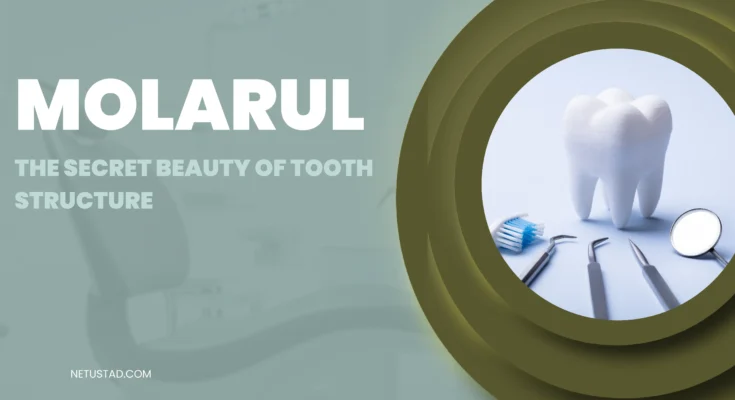In the realm of dental anatomy, the term “molarul” has emerged as a crucial focal point for oral health professionals and enthusiasts alike. This intricate structure, nestled within the posterior regions of the mouth, plays a pivotal role in maintaining optimal dental function and overall well-being. In this comprehensive guide, we’ll explore the depths of molarul, unraveling its intricate workings, significance, and the essential practices that ensure its longevity.
What is Molarul?
Molarul, often referred to as the “wisdom tooth” or the third set of molars, is a remarkable component of the human dentition. These specialized teeth typically emerge during late adolescence or early adulthood, marking a significant milestone in dental development. Molarul is composed of a complex network of hard and soft tissues, including the tooth itself, surrounding gums, nerves, and blood vessels.
Understanding Molarul
To comprehend the true essence of molarul, one must delve into its anatomy and functionality. Situated at the posterior end of the mouth, these teeth boast a unique shape and structure designed for grinding and crushing food particles. Their broad, multi-cusped surfaces and robust roots enable them to withstand immense biting forces, facilitating efficient mastication.
Functionality of Molarul
Molarul plays a pivotal role in the intricate process of chewing and digestion. Its broad surface area and sturdy composition allow it to break down even the toughest of food items, ensuring proper nutrient absorption and overall digestive health. Additionally, molarul contributes to maintaining the integrity of the dental arch, supporting facial structure, and enabling proper occlusion (bite alignment).
Importance of Molarul in Dental Health
Neglecting the care and maintenance of molarul can have far-reaching consequences on overall dental well-being. A healthy it is essential for preserving the natural bite, preventing tooth shifting, and reducing the risk of periodontal disease. Furthermore, it plays a crucial role in speech articulation, as its presence and positioning influence the clarity and quality of one’s voice.
Common Disorders Affecting Molarul
Despite its robust nature, molarul is susceptible to various dental disorders. Impacted it, a condition where the tooth fails to emerge properly, can lead to pain, swelling, and potential infections. Additionally, it is prone to decay and cavities due to its intricate anatomy and difficulty in maintaining proper oral hygiene in the posterior regions of the mouth.

Tips for Optimal Dental Care
Maintaining the health and longevity of molarul requires a diligent and comprehensive approach to dental care. Here are some essential tips to ensure the optimal condition of your it:
Brushing and Flossing
Thorough and consistent brushing and flossing are paramount for removing food particles and plaque buildup from the crevices and surfaces of it. Adopting proper brushing techniques and using interdental cleaners can effectively reach these hard-to-access areas, preventing decay and gum disease.
Healthy Dietary Habits
Consuming a balanced, nutrient-rich diet can contribute to the overall health of molarul. Limiting sugary and acidic foods and beverages can help prevent tooth enamel erosion and cavities. While incorporating crunchy fruits and vegetables can aid in natural tooth cleaning.
Regular Dental Check-ups
Routine visits to a dental professional are crucial for monitoring the condition of molarul and addressing any potential issues early on. Dental professionals can perform thorough cleanings. Examine for signs of decay or gum disease, and recommend preventive measures or treatments as necessary.
Protective Measures
In cases where molarul is prone to decay or at risk of fracture. Dental professionals may recommend protective measures such as dental sealants or custom-fitted mouth guards. These preventive measures can act as a barrier against harmful bacteria and physical trauma, safeguarding the integrity of it.
Orthodontic Evaluation
For individuals with misaligned teeth or jaw problems, seeking orthodontic treatment can help create. Optimal spacing and positioning for molarul, reducing the risk of impaction and ensuring proper eruption. Early evaluation and intervention can prevent future complications and promote a healthier, more functional bite.
Conclusions
Molarul, the often-overlooked cornerstone of dental anatomy, plays an indispensable role in maintaining optimal oral health and function. By understanding its intricacies, recognizing its significance, and adopting proactive measures for its preservation. Individuals can safeguard their dental well-being and enjoy a lifetime of healthy, confident smiles.
Frequently Asked Questions
What is the purpose of molarul?
Molarul, also known as the wisdom teeth or third molars, are primarily responsible for grinding and crushing food during the chewing process. They aid in proper digestion and nutrient absorption, while also contributing to the structural integrity of the dental arch and facial structure.
Why is it important to take care of molarul?
Neglecting the care and maintenance of it can lead to a variety of dental issues, including tooth decay, gum disease, impaction, and misalignment. Preserving the health of it is essential for maintaining proper bite alignment, speech articulation, and overall oral health.
How can I prevent problems with my molarul?
Practicing good oral hygiene habits, such as thorough brushing and flossing, consuming a balanced diet. Attending regular dental check-ups, can help prevent issues with it. Additionally, seeking orthodontic evaluation and considering protective measures like dental sealants or mouth guards can further safeguard the integrity of these vital teeth.
What should I do if my molarul is impacted?
If you suspect an impacted it, it is crucial to consult with a dental professional. Impacted molarul can cause pain, swelling, and potential infections if left untreated. Your dentist or oral surgeon may recommend extraction or other interventions to alleviate the condition and prevent further complications.
Can molarul be replaced if extracted?
While it is possible to replace extracted it with dental implants or bridges. It is generally recommended to preserve natural teeth whenever possible. It play a crucial role in maintaining proper bite alignment and jaw function, and their replacement may not fully replicate their natural functionality.
Also Read FTMÇ: Online Presence & Visibility



